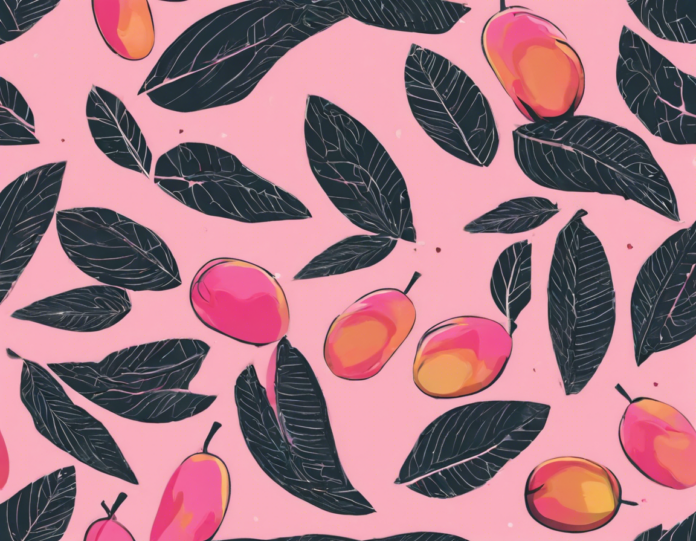Pink mango, also known as Manila mango or champagne mango, is a delightful fruit that captivates with its sweet and tangy flavors. Belonging to the Anacardiaceae family, this tropical fruit is native to the Philippines and is now widely cultivated in other regions like Mexico, India, and Thailand. From its unique taste to its vibrant pink-orange hue and smooth, thin skin, pink mangoes have gained popularity among fruit enthusiasts worldwide.
In this article, we will delve into the fascinating world of pink mangoes, exploring their origins, nutritional benefits, culinary uses, and more. Whether you enjoy them fresh, in smoothies, desserts, or savory dishes, pink mangoes offer a burst of tropical flavor that is truly irresistible.
Origins and Varieties of Pink Mangoes
Pink mangoes originally hail from the Philippines, where they are known as “Manila mangoes” due to their prevalence in the capital city. They are also called “champagne mangoes” in some regions, a name derived from their creamy, smooth texture and delicate flavor reminiscent of champagne.
There are several popular varieties of pink mangoes, each with its unique characteristics:
1. Ataulfo Mango:
- Also referred to as honey or champagne mango.
- Small, golden yellow fruit with a buttery texture and rich, sweet flavor.
- Known for its lack of fibrous strands, making it easy to eat and ideal for blending into smoothies or sauces.
2. Carabao Mango:
- The most common type of mango in the Philippines.
- Large and oval-shaped with a thin, smooth skin and vibrant pink-orange flesh.
- Renowned for its intense sweetness and juiciness, often eaten fresh or used in desserts.
3. Keitt Mango:
- Originally from Florida, now cultivated in various countries.
- Large, green fruit that retains its green color even when ripe.
- Offers a mild sweetness and firm texture, making it suitable for salads and salsas.
Nutritional Benefits of Pink Mangoes
Pink mangoes are not only delicious but also pack a nutritious punch. They are rich in essential vitamins, minerals, and antioxidants that contribute to overall health and well-being. Here are some key nutritional benefits of incorporating pink mangoes in your diet:
- Vitamin C: Pink mangoes are an excellent source of vitamin C, which supports immune function, skin health, and collagen production.
- Vitamin A: These fruits are also high in vitamin A, essential for vision health, immune function, and cell growth.
- Dietary Fiber: Pink mangoes contain dietary fiber, promoting digestive health and aiding in weight management.
- Antioxidants: They are loaded with antioxidants like beta-carotene and flavonoids, which help protect cells from damage caused by free radicals.
Culinary Uses of Pink Mangoes
Pink mangoes are incredibly versatile and can be used in a variety of culinary applications, adding a sweet and tangy twist to both sweet and savory dishes. Here are some creative ways to enjoy the unique flavor of pink mangoes:
1. Fresh Consumption:
- Simply peel and slice a ripe pink mango for a refreshing snack or dessert.
- Add diced mango to fruit salads or smoothie bowls for a burst of tropical sweetness.
2. Desserts:
- Incorporate pureed pink mango into ice cream, sorbets, or popsicles for a creamy and fruity treat.
- Make mango tarts, pies, or cakes to showcase the vibrant color and flavor of these fruits.
3. Savory Dishes:
- Use diced pink mango in salsas, chutneys, or relishes to accompany grilled meats or seafood.
- Create mango salsa for tacos, quesadillas, or grilled chicken for a zesty flavor.
4. Beverages:
- Blend pink mango with yogurt and honey for a refreshing smoothie.
- Make mango lassi, a traditional Indian drink, by blending mango with yogurt, milk, and spices.
How to Select and Store Pink Mangoes
To fully enjoy the delightful flavors of pink mangoes, it is essential to choose ripe fruits and store them properly. Here are some tips on selecting and storing pink mangoes:
- Color and Texture: Look for pink mangoes that are mostly pink-orange in color and yield slightly to gentle pressure when ripe.
- Aroma: Ripe pink mangoes should have a sweet, fruity aroma at the stem end.
- Avoid Bruises: Avoid fruits with bruises, soft spots, or wrinkled skin.
- Ripening: To ripen pink mangoes, leave them at room temperature in a paper bag for a few days until they soften.
- Refrigeration: Once ripe, store pink mangoes in the refrigerator to slow down the ripening process and extend their shelf life.
Frequently Asked Questions (FAQs) about Pink Mangoes
1. Are pink mangoes genetically modified (GMO)?
- No, pink mangoes are not genetically modified. They are grown through traditional cultivation methods.
2. Can pink mangoes help with weight loss?
- Pink mangoes are a nutritious, low-calorie fruit high in fiber, which can aid in weight management as part of a balanced diet.
3. How do I know if a pink mango is ripe?
- A ripe pink mango will give slightly to gentle pressure and emit a sweet aroma at the stem end.
4. Are the skins of pink mangoes edible?
- While the skin of pink mangoes is technically edible, it is often peeled before consumption due to its tough texture.
5. Can pink mangoes be frozen?
- Yes, pink mangoes can be frozen for later use in smoothies or desserts. Simply peel, dice, and freeze the flesh in an airtight container.
6. Do pink mangoes have any health benefits?
- Yes, pink mangoes are rich in vitamins, minerals, and antioxidants that offer various health benefits, including immune support and digestive health.
7. What is the best way to cut a pink mango?
- To cut a pink mango, slice off the cheeks on either side of the pit, score the flesh in a crisscross pattern, and then scoop it out with a spoon.
8. Can pink mangoes be used in savory dishes?
- Yes, pink mangoes can be used in savory dishes like salsas, chutneys, and salads to add a sweet and tangy flavor dimension.
9. Are pink mangoes in season all year round?
- Pink mangoes have a peak season in the summer months but are available year-round due to cultivation in different regions.
10. What is the best way to store cut pink mangoes?
- Store cut pink mangoes in an airtight container in the refrigerator for up to two days to maintain freshness and flavor.
In conclusion, pink mangoes are a delightful tropical fruit that offers a perfect balance of sweetness and tanginess. Whether enjoyed fresh, in desserts, or incorporated into savory dishes, pink mangoes bring a burst of flavor to any culinary creation. With their rich nutritional profile and versatile culinary uses, pink mangoes are indeed a fruit worth exploring and savoring.



